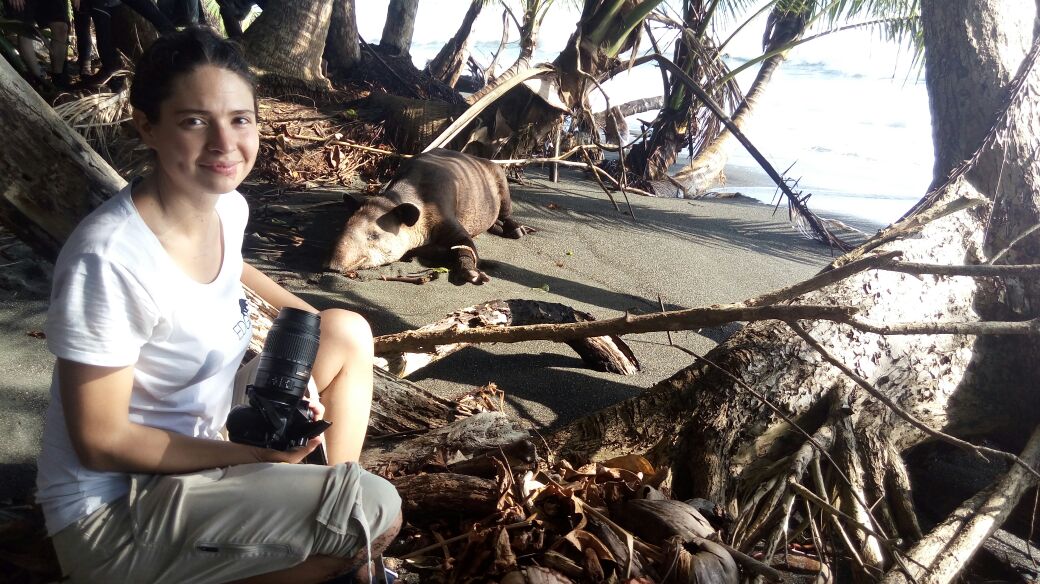Marina Rivero is one of our newest Nat Geo Photo Ark EDGE Fellows, who will soon be starting her project focused on the Baird’s tapir in Mexico. We asked Marina to write this blog to introduce herself, her project, and explain what an EDGE Fellowship means to her.
From bats to tapirs…
This is me with my godmother Anna eating cake on my first birthday. And I believe that neither she nor my parents nor even I thought that I would become a biologist and eventually a wildlife conservationist. I grew up in a big city, Mexico City, and my closest link with nature was through wildlife documentaries and when my parents took my sister and I camping. Since then, the natural history of animals but specially mammals became one of my biggest passions.
I started working with bats during my undergraduate studies. And these animals really impressed me because of their great diversity of faces, forms and behaviors. I didn’t think that these small, neglected animals would have such an important role in bringing so many environmental services to human beings. I thought I would work with them forever, but something changed.
While I was doing my thesis with bats in the Lacandona Rainforest, in Chiapas, I was also helping as a field assistant in a jaguar project in the same area. During the long walks to find bat tents or setting traps to capture jaguars, my mind was focused on finding this mythical and prehistoric animal – a survivor of the Pleistocene megafauna, and nowadays the biggest neotropical mammal – the Baird’s tapir. However, I never had the luck to see it.

Since then, I became obsessed with the idea of working with tapirs. In 2015, I had the opportunity to start a project with the species in the Sierra Madre de Chiapas. This was a great project because it combined study of the ecology of the Baird’s tapir with using a community-based conservation approach, something I consider is fundamental for any conservation project.
Through this project I trained local people in the basic concepts of biological monitoring and in the use of camera traps. This group became the tapir community monitors and since then they have been in charge of implementing the surveys using camera traps with the aim of evaluating the conservation status of Baird’s tapirs in the region. Additionally, one of the most positive impacts of this project was the agreement from 14 local communities to eradicate completely the poaching of the tapirs in the region, which is one of the main threats for the species.

In January I joined the EDGE team for my Conservation Tools training course, which was held in Osa Peninsula, Costa Rica. While I was there I never expected for my dream to finally come true – as we came across a Baird’s tapir sleeping on the sand!


After completing the training course I officially became a Nat Geo Photo Ark EDGE Fellow. Over the next two years I will be working to strengthen and scale up the Tapires de la Sierra Project, which was started in 2015. This project is crucial to Baird’s tapir conservation because the Sierra Madre de Chiapas hosts one of the most threatened populations of the species in Mexico, mainly due to the isolation of the region and the persistent poaching of the species.
Learn more about Marina’s project here.
Learn more about Baird’s tapir here.
